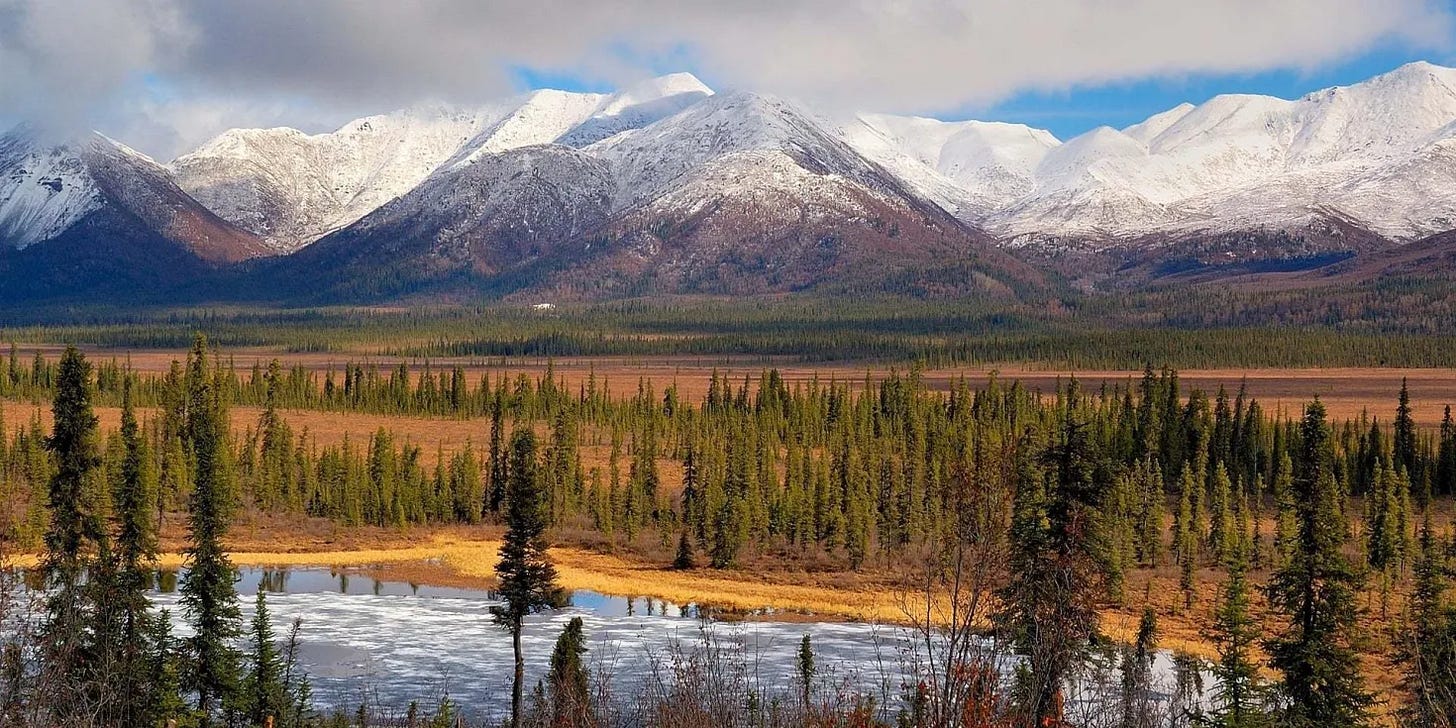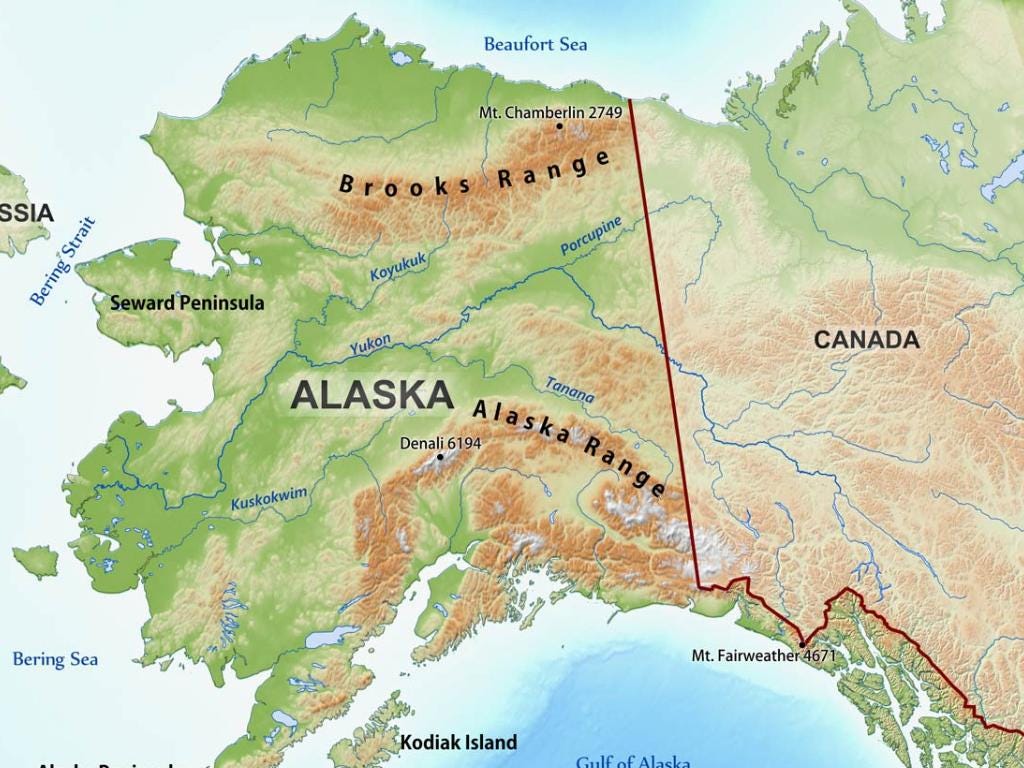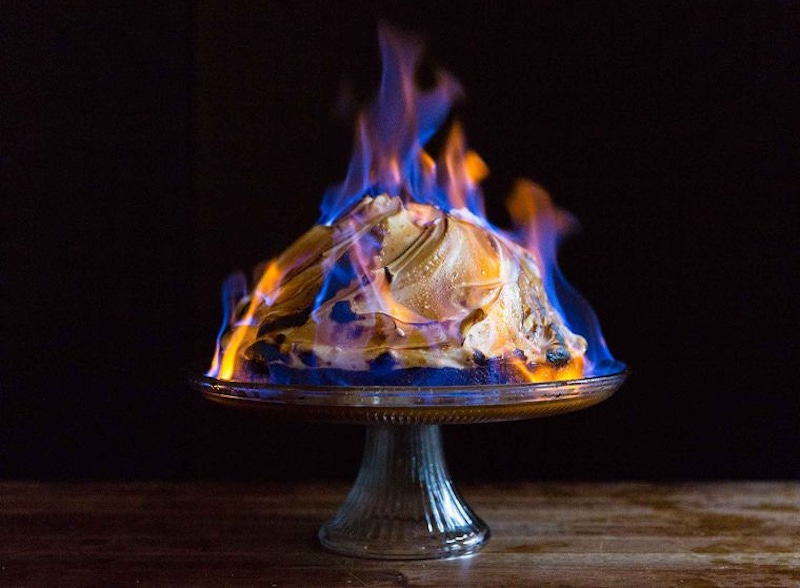On June 13, a heat advisory was issued in Alaska, the first one ever. While this alone does not provide proof the largest state in the nation is impacted by climate change, scientific study does. This AP article featured a picture of sun bathers on a Goose Lake Anchorage beach, and assured us we can put an asterisk at the end of the term “heat advisory.” Wrong. Both the photo and statement were greenwashing, placating a mostly unwitting public. Alaska is almost entirely composed of permafrost which sequesters massive amounts of CO2 (carbon dioxide) and CH4 (methane) the primary gases driving climate change. Their release is an existential threat. Alaska is warming at two to three times the rate of the global average. That’s the real story.
Shame on the AP for not publishing a responsible article. Although Alaska is not part of the Arctic, it borders it. Release of greenhouse gases (GHGs) stored for millions of years in the Arctic (which is warming at four times the global average) is set to release twice the CO2 we have pumped into the atmosphere since the industrial revolution, a fatal 1.4 trillion metric tons. Vast Alaska (larger than Texas, California, and Montana combined) is 85 percent permafrost, to be specific. For all intents and purposes, Alaska flipping from a carbon sink to an emitter is an extension of the Arctic.
The map below well-illustrates the worsening problem. Alaska’s statewide annual average surface air temperature is projected to increase 8.1°F to 14.2°F by the end of the century. Evidence indicates the speed of climate change is increasing, so the “safe” bet is to anticipate the higher figure. Left unchecked, these temperature increases will bring fatal devastation to people, ecosystems and wildlife. They will destroy the economy of Alaska’s residents, inflicting particular injustice on indigenous people who live the sustainable subsistence lifestyles we should be judiciously emulating.

Accelerating global warming, doubled rate since 2009

For years now, we have witnessed Alaskan villages fall into the Pacific. People who for centuries built their communities and cultures on the slow, wise, balanced workings and abundance of our dying oceans are losing them. It won’t just be the Iñupiat, Yupik, Aleut, Eyak, Tlingit, Haida, and Tsimshian people who suffer. As oceans and permafrost go, so shall all of us.
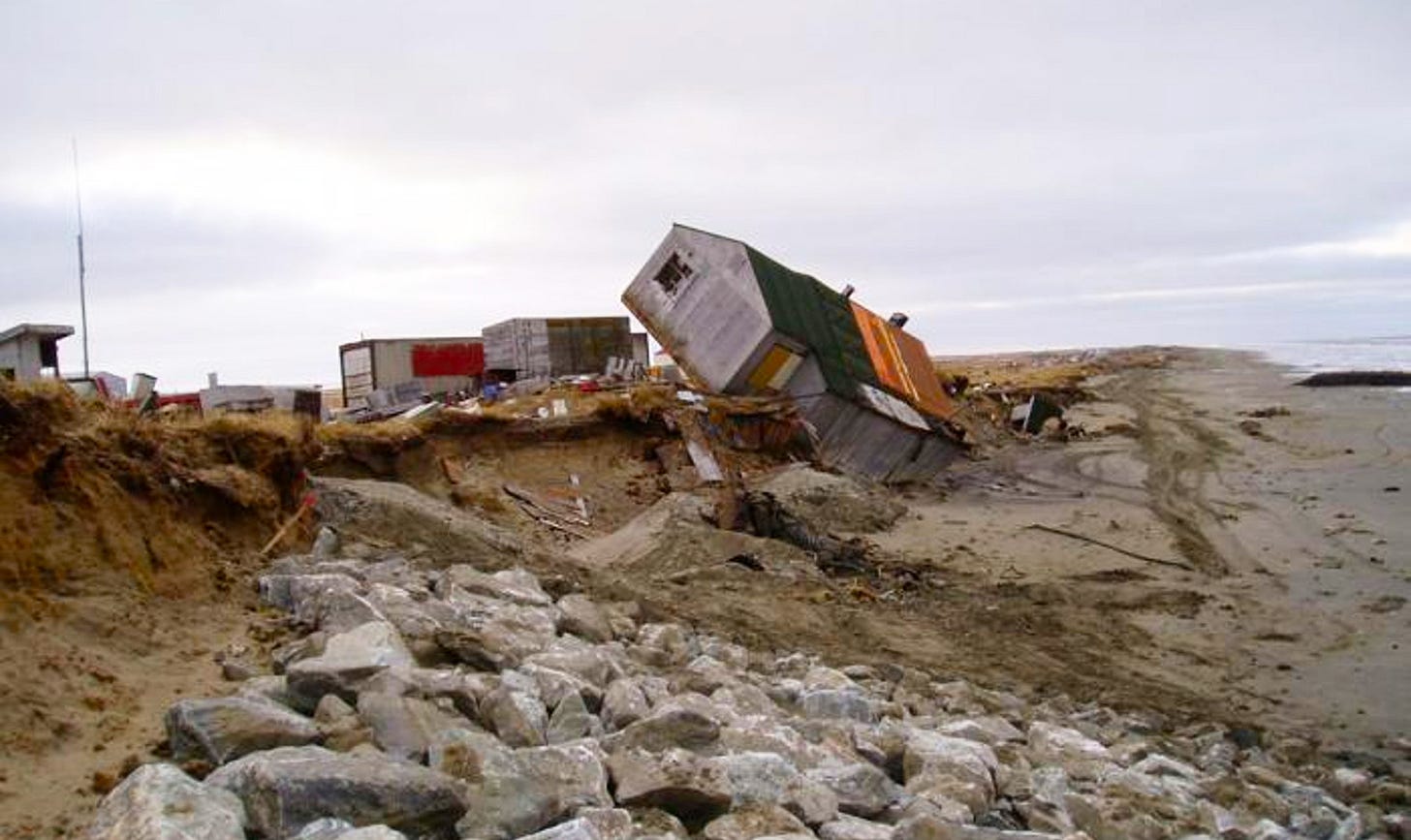
Alaska coastal erosion rates

Eroding environment, but increasing stupidity
2019 was Alaska’s hottest year on record. Pfft, that was six years ago you say? Don’t relax, 2019 was part of an inexorable trend, a temporary peak destined to be broken, particularly as Trump removes all barriers to drilling and logging in the state, thirteen million previously protected acres, including protected wilderness in the Arctic National Wildlife Refuge. Trump’s orders also remove restrictions on oil development in the Arctic Ocean and Bering Sea. Even before reelection of this clueless, racist dope, the ten-year temperature trend was going up, pointing to inferno Alaska.
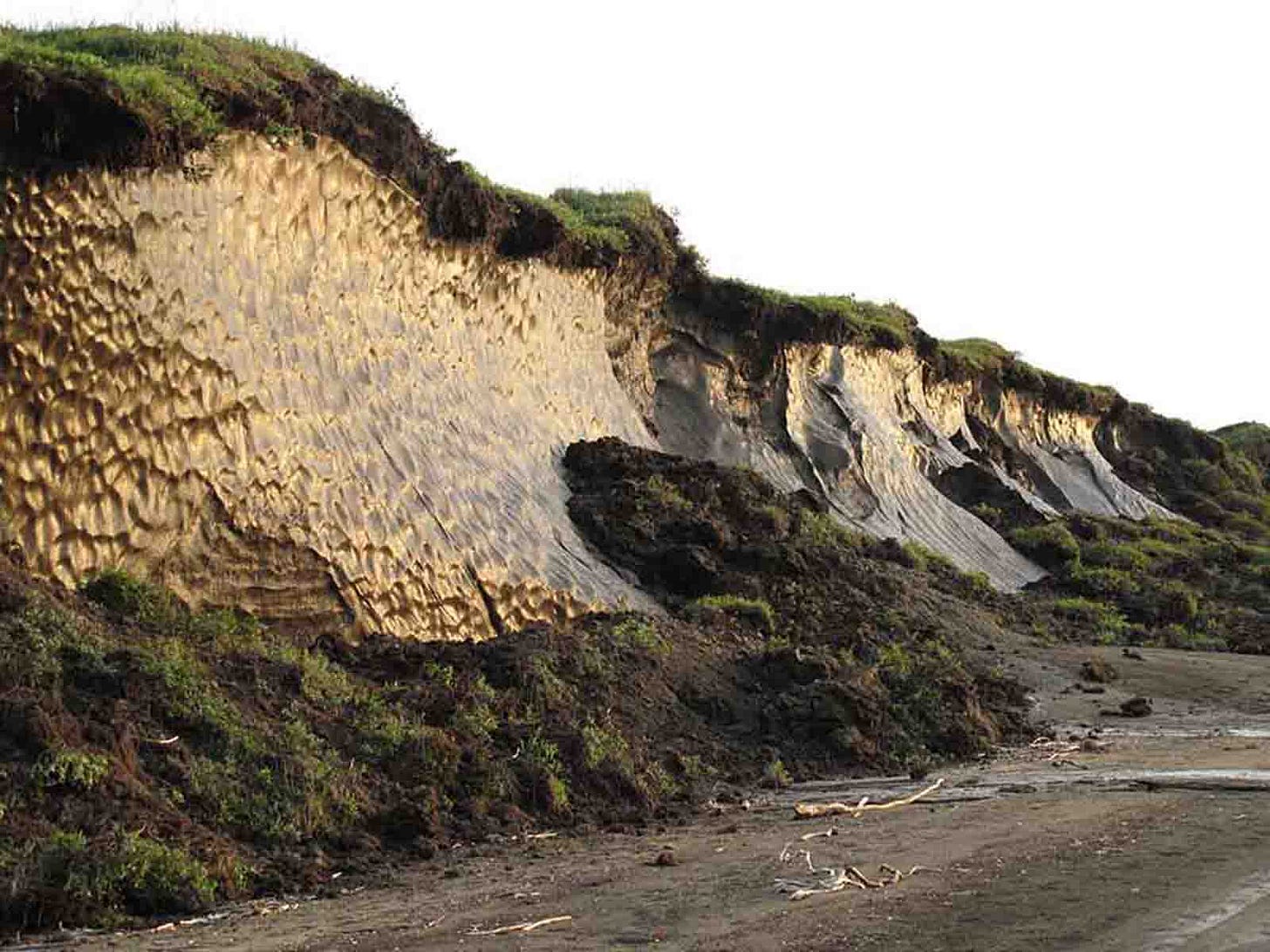
In July 2019, temperatures across the state reached 20°to 30°F above average in some locations. Anchorage International Airport hit 90°F, a city where the average summer temperature is normally in the mid-sixties. It also hit 80°F for six consecutive days, double the previous record, three of which broke or tied previous all-time records. Juneau’s high temperature reached at least 70°F for a record seventeen consecutive days. The average high temperature from June 27 through July 8 was nearly 81°F, 5.5°F higher than the previous 12-day record.
Not convinced? Want more evidence? Just don’t drink the water, hey, hey.
Orange water. It ain’t Tang.
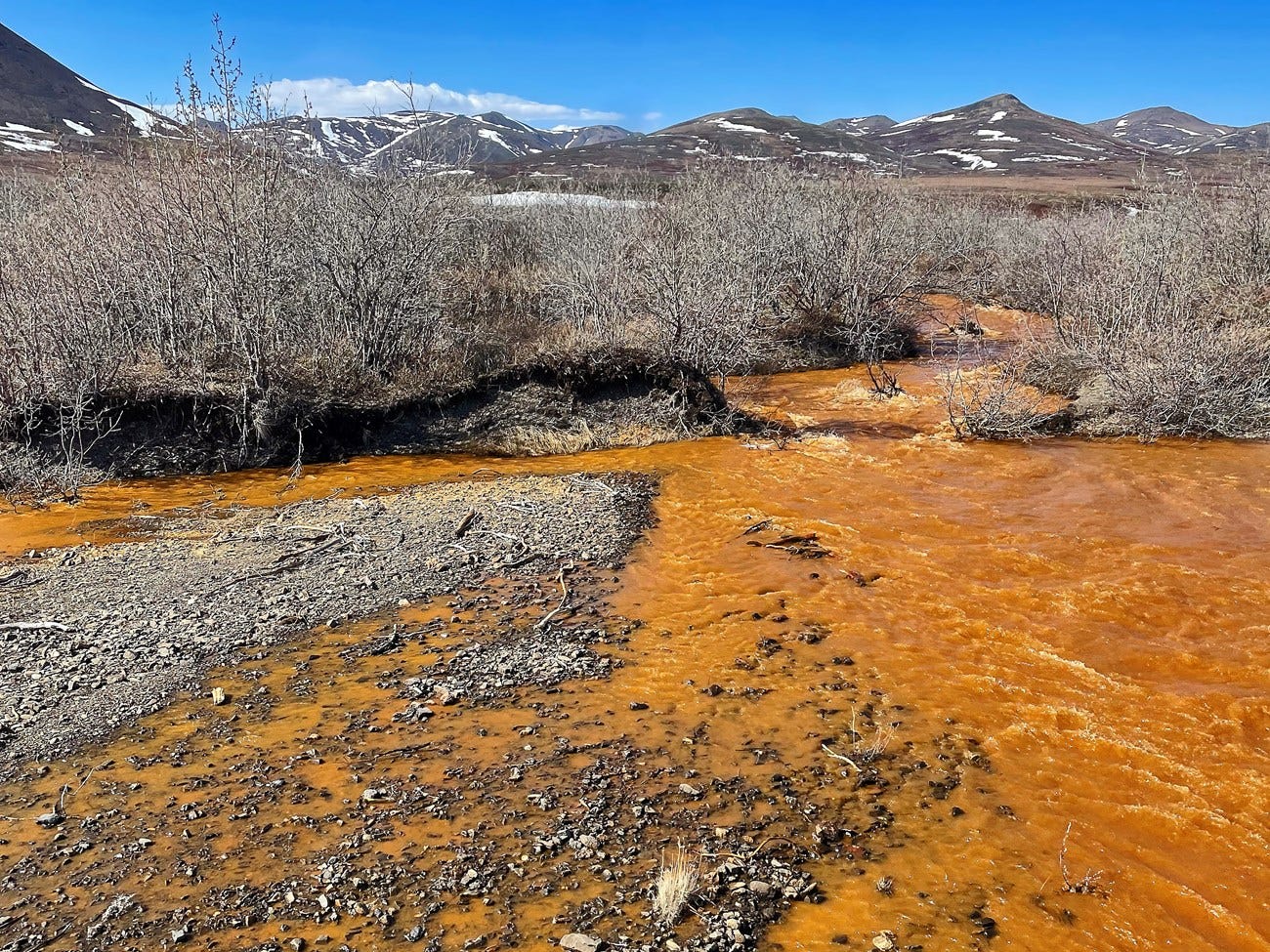
The release of CO2 and CH4 from permafrost aren’t the only threats to life in Alaska. The release of iron and toxic concentrations of heavy metals as ground thaws — zinc, nickel, cadmium, and copper — are also an immediate threat to the habitats of the subsistence fish Indigenous people depend on such as Dolly Varden (a trout species), chum salmon, and whitefish. Bioaccumulation of the metals in fish are well-known and intensify as they pass to the bodies of those eating them. Biomagnification concentrates those toxins as you move up the food chain. A small fish eats mercury laden kelp for instance. A large fish eats the mercury laden small fish. You and I eat the large fish for a triple dose. I learned that in grade school, dammit. This is what subsistence living looks like on a planet run by corporate morons, disease no matter how small and responsibly you live. Additionally, these metals released in tributaries, are transported downstream from the rivers they enter, and could easily contaminate drinking water supplies for nearby villages as well. Why eat the fish, when you can get your heavy metals in the water supply?
The Brooks range is in northern Alaska, where temperature rise has been the greatest. Further contamination is likely inevitable. This does not bode well for its inhabitants human or otherwise.
When I was in my early teens, I was invited to a birthday party. Hard to believe I suppose with the uncompromising words I write here. Although I knew far less about the plight of the world, a sinking feeling had already begun to form in me from witnessing how my father, a university educator and fine artist was treated in academia. His unshakable ethics, forced us to move time and time again, and every move brought bullies to my doorstep. I was also a reader of his library of many of the best authors of his generation, and earlier ones, a true difference maker.
When we moved to Cincinnati, Ohio, it was already the sixth move of my young life. Cincinnati was hot, very hot. In the spring and summer, opening the front door to our air-conditioned home was like a blast furnace in your face followed by smothering from suffocating, heavy wet towels. There were thermal inversions that trapped “progress,” the smog from huge Proctor and Gamble, and GM plants. On some days the air pollution came to ground level, creating a gray film that hazed neighbor’s homes across the street. I will always remember trying to take a bicycle ride on one such day, and coming home after just circling the block, my young lungs unable to get enough air. I was literally gasping,
In the current ongoing Midwestern heatwave, my old town is experiencing heat indexes over 105° F. This link to some crummy rag of a publication warns of the life-threatening heat, but features an ad that says, “SHOP NOW.” It should say “SHOP NOW, DIE TOMORROW.” We are financing our own extinction. Pavement is buckling. When pavement buckles it’s a reliable indicator you will buckle too, if that precious AC goes out. And here’s the thing, IT WILL go out from wires melting, transformers exploding, and deadly brownouts and blackouts, if not for someone I knew in Cincinnati, then perhaps a good friend near San Antonio, Texas or another one who lives in Las Vegas. We’re all in danger now, no matter our location.
The birthday party was memorable for something I had never seen before, and found entirely absurd. Baked Alaska. What kind of idiot invents setting ice cream on fire?



